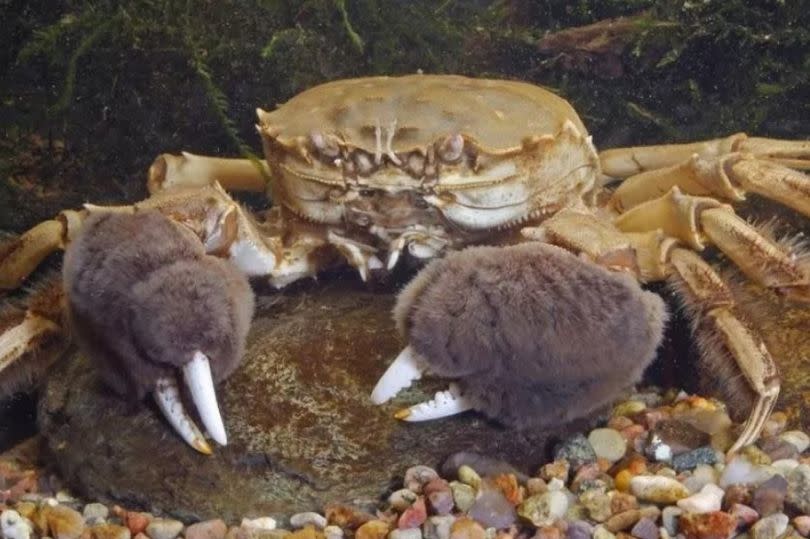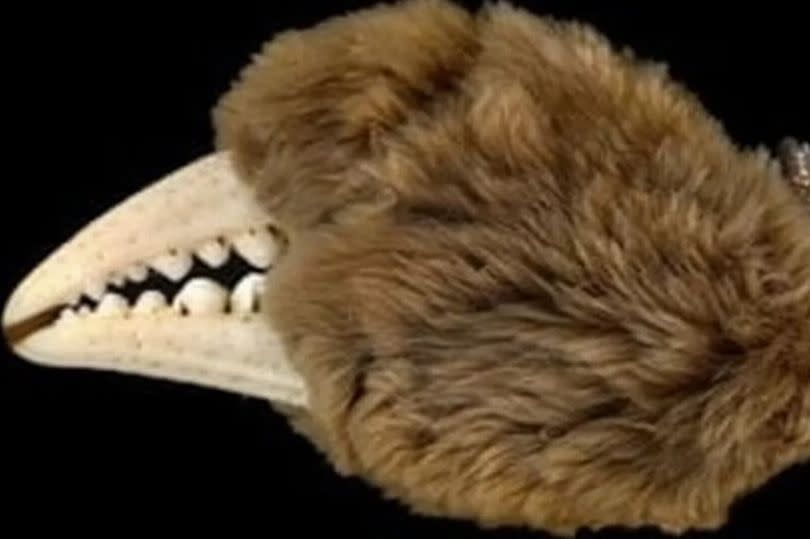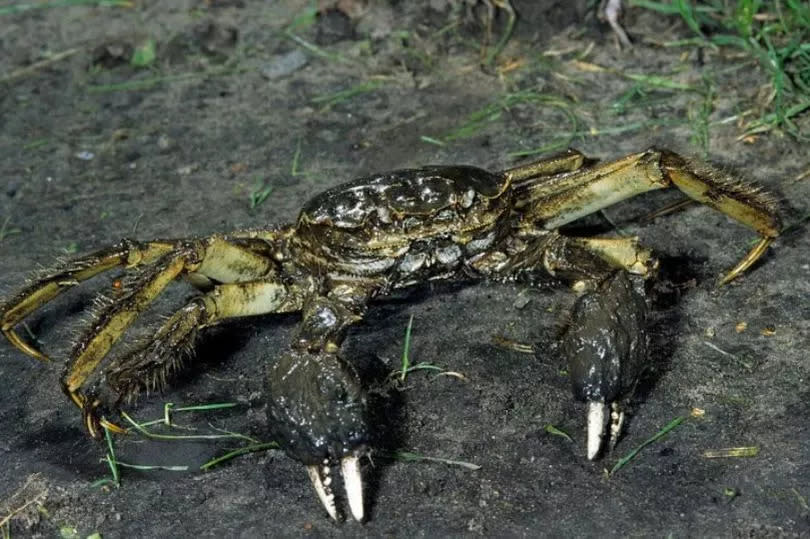Giant Chinese crabs invading North Wales waters

People are being urged to be vigilant for an invading army of giant Chinese mitten crabs spotted in North Wales waterways. With more than 800 sightings recorded in the UK, their presence has now been confirmed in the Dee, Conwy, and Severn estuaries in Wales.
The crabs – named because of their huge furry claws – are among the 100 worst invasive species according to Natural Resources Wales.
The environment organisation warned the creatures are eating the UK's native fauna and posing a threat to biodiversity and are urging members of the public to do their bit to protect it.
READ MORE: The North Wales beach pollution alerts after 'get out of sea' warning
READ MORE: Casualty taken to hospital after Gwynedd cliff fall sparks multi-rescue team response
the UK set up its first trap for the crabs at Pode Hole in Lincolnshire last year in a bid to snare the predators as they migrate downstream to mate, reports The Star.
The invaders are thought to have travelled from eastern China to Europe in sediment on the bottom of ships' ballast tanks either as tiny crabs or larvae.
The first one spotted in the UK was recorded at Lotts Road Power Station which used to generate electricity for the London Underground.
Females can carry from between 500,000 and a million eggs at one time. Experts said there are millions "eating us out of house and home" with native food being depleted and biodiversity "going down."

Mitten crabs grow to the size of a 10in dinner plate, damage fishing gear with their razor sharp claws and eat native species.
Researchers found they prey on salmon and trout eggs - species already under threat in the wild. They also feast on large quantities of mussels and so much river vegetation that they can cause major damage to river courses.
They can carry diseases such as lung fluke and crayfish plague, and will outcompete and predate on the protected, white-clawed crayfish, as well as damage flood assets by burrowing.
Adult Chinese mitten crab spend four to five years in freshwater and move down to estuaries to breed and spawn before they die. Their plankton develop in the estuary, and then juveniles move back upstream.
Jennie Jones, specialist advisor for invasive non-native species (INNS) at Natural Resources Wales said: “Protecting biodiversity is so vital in tackling the climate and nature emergencies. It is important to take action to tackle INNS that pose a threat to native wildlife.
“Most non-native species are harmless, but around 10-15% can become invasive and cause harm. These types of invasive non-native species, like the Chinese mitten crab, outcompete some of our native biodiversity and cause damage to the environment.

"There are ways we can all help to prevent the spread of these species, including carrying out biosecurity, recording your sightings and joining a local action group. We really encourage people to get to know what these invasive species are, and record their sightings through the iRecord app or through its online space that collects information about where these non-native invasive species are being seen.”
Sign up now for the latest news on the North Wales Live Whatsapp community
Invasive non-native species are one of the top threats to global biodiversity; 86% of extinctions that have happened on islands were contributed to by invasive non-native species. It costs Great Britain’s economy over £2 billion a year to deal with the issue, and INNS can even harm human health.
To help stop the spread of the Chinese mitten crab and other INNS, there are three simple things people can do:
1. Ensure you do not accidently move this species to a new area by checking, cleaning and drying any equipment, clothing or shoes before travelling to a new site. Now is a critical time in the lifecycle of mitten crabs, there will be larva in the water column which cannot be seen but can cling to any equipment you might be using. It is especially important to check clean dry all your equipment at this time
2. Learn how to identify mitten crab and keep an eye out for this species
3. Record any mitten crab sightings via iRecord
See what's happening in your area:

 Yahoo News
Yahoo News 
